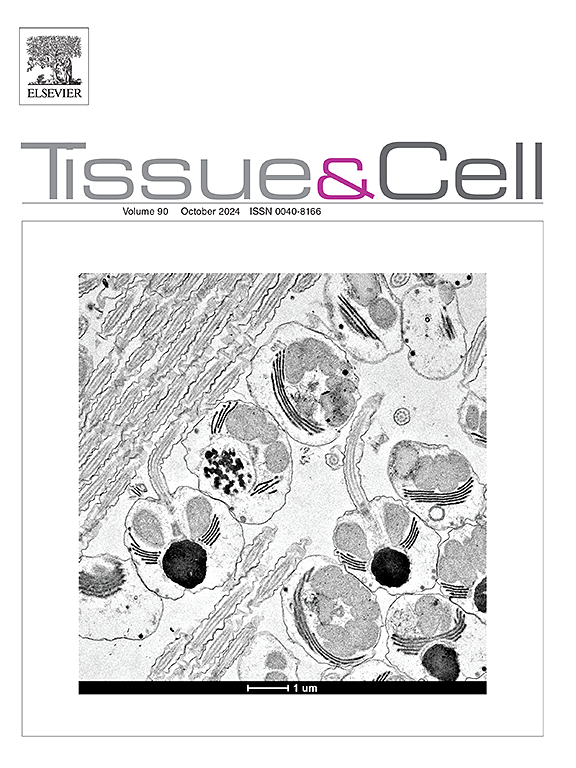Gegen Qinlian Decoction improves Alzheimer’s disease through TLR4/NF-κB/NLRP3 pathway
IF 2.7
4区 生物学
Q1 ANATOMY & MORPHOLOGY
引用次数: 0
Abstract
Objective
Alzheimer’s disease (AD) is a neurodegenerative disease that leads to dementia, but effective treatments are lacking. This study aims to evaluate the therapeutic effects of Gegen Qinlian Decoction (GGQLD) on AD and investigate the underlying mechanisms.
Methods
Using network pharmacology and bioinformatics, we identified 376 active ingredients of GGQLD and 427 drug targets. Among these, 7 potential targets (CASP1, MKI67, NFKB1, TLR4, NLRP3, IL1B, and AKT1) were identified as intersecting targets of both GGQLD and AD. Functional enrichment analysis revealed that GGQLD regulates pyroptosis-related pathways. In vivo, GGQLD was administered to AD rat models to assess its effects on spatial learning, memory, and brain tissue injury.
Results
GGQLD significantly reduced latency time by 40 % and increased platform crossings by 60 % in AD rats, demonstrating improved spatial learning and memory abilities. It also reduced hippocampal tissue damage and abnormal Aβ deposition. Mechanistically, GGQLD downregulated pyroptosis-related targets (TLR4, NF-κB, NLRP3, IL-1β, and Caspase-1), which were significantly upregulated in AD. ROC analysis demonstrated strong diagnostic significance for these genes, with AUC values exceeding 0.70. Functional enrichment and KEGG analysis further indicated that GGQLD exerts its therapeutic effects through multiple pathways, particularly the NOD-like receptor pathway, Necroptosis, and NF-kappa B pathway.
Conclusions
This study demonstrates that GGQLD improves spatial learning, reduces brain tissue damage, and alleviates inflammation in AD through the regulation of pyroptosis-related pathways, providing evidence for its potential as a therapeutic agent for AD.
求助全文
约1分钟内获得全文
求助全文
来源期刊

Tissue & cell
医学-解剖学与形态学
CiteScore
3.90
自引率
0.00%
发文量
234
期刊介绍:
Tissue and Cell is devoted to original research on the organization of cells, subcellular and extracellular components at all levels, including the grouping and interrelations of cells in tissues and organs. The journal encourages submission of ultrastructural studies that provide novel insights into structure, function and physiology of cells and tissues, in health and disease. Bioengineering and stem cells studies focused on the description of morphological and/or histological data are also welcomed.
Studies investigating the effect of compounds and/or substances on structure of cells and tissues are generally outside the scope of this journal. For consideration, studies should contain a clear rationale on the use of (a) given substance(s), have a compelling morphological and structural focus and present novel incremental findings from previous literature.
 求助内容:
求助内容: 应助结果提醒方式:
应助结果提醒方式:


